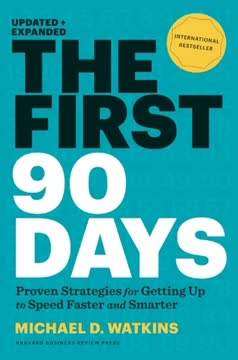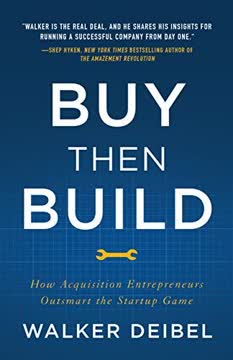重点摘要
1. 营销和销售必须协调一致以实现业务成功
当销售业绩不佳时,营销部门指责销售团队未能有效执行原本出色的推广计划。而销售团队则声称,营销部门定价过高,且预算使用过多,应该用于招聘更多销售人员或支付更高的佣金。
不协调损害绩效。 当营销和销售部门不同步时,会对公司绩效产生负面影响。这种脱节可能导致销售周期延长、市场进入成本增加以及销售成本上升。
协调的好处。 相反,当营销和销售部门协同工作时,公司在关键绩效指标上会有显著改善:
- 缩短销售周期
- 降低市场进入成本
- 减少销售成本
案例研究:IBM的成功。 IBM通过创建一个名为渠道赋能的新职能,整合了销售和营销团队,展示了整合的力量。这一整合解决了多个问题:
- 销售人员专注于满足产品需求而非创造需求
- 营销人员未能将广告支出与实际销售联系起来
- 协调不力导致产品发布时机不当
通过协调这些部门,IBM能够利用营销努力并提高整体绩效。
2. 理解不断演变的营销-销售关系
随着公司规模的扩大和成功,管理层认识到营销不仅仅是设定四个P:产品、定价、地点和促销。
营销角色的演变。 随着企业的成长,营销职能的性质发生了显著变化:
-
小企业:
- 没有正式的营销团队
- 营销理念来自经理、销售团队或广告公司
- 营销等同于销售
-
成长中的企业:
- 增加营销人员以支持销售团队
- 营销人员进行研究、选择市场并开发宣传材料
- 营销被视为销售的辅助
-
大型公司:
- 营销成为独立的角色
- 专注于细分、定位和定位
- 与销售争夺资金
动态变化。 这种演变可能导致销售和营销之间的分歧,因为它们的使命不同。销售人员可能希望营销人员专注于长期战略,而营销人员则开始与战略规划和产品开发等其他部门更紧密地合作。
3. 克服部门间的经济和文化冲突
经济摩擦源于需要分配高级管理层授予的支持销售和营销的总预算。
经济冲突。 销售和营销之间的摩擦通常源于预算分配问题:
- 定价:销售倾向于较低的价格以便于销售,而营销则追求收入目标
- 促销:销售认为大额广告预算是浪费,倾向于投资于销售团队
- 产品特性:销售关注个别客户需求,而营销则寻求广泛吸引力
文化差异。 这两个职能吸引了不同类型的人,具有不同的工作方式:
| 营销 | 销售 |
|---|---|
| 分析和数据导向 | 关系导向 |
| 项目导向 | 行动导向 |
| 长期战略思维 | 短期结果导向 |
| 桌面工作 | 外勤工作 |
绩效评估差异。 销售成功可以通过成交量轻松衡量,而营销对长期竞争优势的影响则难以量化。这种绩效评估的差异可能加剧两个部门之间的紧张关系。
4. 四种营销-销售关系类型:从未定义到整合
随着公司营销和销售职能的成熟,关系从未对齐(通常有冲突)到完全整合(通常无冲突)。
关系谱。 营销-销售关系通常属于以下四类之一:
-
未定义:
- 部门独立发展
- 对彼此活动了解有限
- 临时会议以解决冲突
-
定义:
- 建立防止争议的流程和规则
- 部门间有明确界限
- 为潜在争议领域开发共同语言
-
对齐:
- 部门间有灵活界限
- 联合规划和培训
- 销售使用营销术语
- 营销参与关键客户
-
整合:
- 部门间界限模糊
- 共享结构、系统和奖励
- 营销专注于战略任务
- 共享指标和灵活预算
向整合迈进。 随着公司成熟,它们往往沿着这个谱向更大的整合迈进。然而,完全整合是罕见的,并非每个组织都需要。
5. 评估和改进营销-销售对齐
我们设计了一种评估工具,可以帮助组织评估其销售和营销部门之间的关系。
评估工具。 作者开发了一种工具,帮助组织评估其销售和营销部门的对齐程度。该工具:
- 帮助管理者客观判断其组织文化
- 使公司能够识别改进领域
- 可以揭示销售和营销人员之间的不同看法
改进对齐。 一旦组织了解其当前的营销-销售关系,就可以采取措施加强对齐:
-
从未定义到定义:
- 建立明确的流程和规则
- 定义角色和职责
- 创建共同语言
-
从定义到对齐:
- 实施联合规划和培训
- 让营销参与关键客户
- 鼓励销售使用营销术语
-
从对齐到整合:
- 重新设计共享结构和系统
- 开发共享指标
- 创建“共同进退”的文化
6. 通过协作创造客户价值
一旦确定了起点,公司可以采取实际步骤将两个职能转变为更具生产力的关系。
协作方法。 通过协作,营销和销售可以为客户创造更大的价值:
- 共享客户洞察:销售提供一线客户反馈,营销提供更广泛的市场趋势
- 协调产品开发:结合销售的个别客户知识和营销的广泛吸引力理解
- 统一信息传递:确保在所有客户接触点上传递一致的品牌和价值主张
协作最佳实践:
- 定期跨职能会议
- 共享客户关系管理(CRM)系统
- 关键客户的联合账户规划
- 交叉培训计划以建立相互理解
协作的好处:
- 更有效的产品发布
- 提高客户满意度
- 更高的转化率
- 增加客户终身价值
7. 适应市场变化和消费者需求
强大的社区不是建立在品牌声誉上,而是建立在对成员生活的理解上。
市场驱动方法。 成功的公司根据不断变化的市场条件和消费者需求调整其营销和销售策略:
- 定期评估市场趋势和消费者行为
- 相应调整产品供应和信息传递
- 跨部门协作以快速应对变化
适应的例子:
- 从产品中心转向解决方案中心
- 开发个性化的营销和销售策略
- 创建客户社区以促进参与和忠诚度
适应性的好处:
- 提高客户满意度和忠诚度
- 增加市场份额
- 更好地定位对抗竞争对手
- 增强识别和利用新机会的能力
8. 利用技术和数据实现更好的整合
CRM最终是一个评估客户需求和行为的工具——新客户部门的核心角色。
技术作为推动力。 现代工具和数据分析可以显著改善营销-销售整合:
- 共享CRM系统:提供统一的客户互动和偏好视图
- 营销自动化:简化潜在客户生成和培育过程
- 销售赋能工具:为销售人员提供相关内容和洞察
- 数据分析:为两个部门提供可操作的洞察
技术整合的好处:
- 提高潜在客户质量和转化率
- 更个性化的客户体验
- 更好地将营销活动与销售目标对齐
- 数据驱动的决策
实施考虑:
- 确保所有用户的适当培训
- 建立明确的数据输入和管理流程
- 定期审查和优化技术使用
- 在两个部门中培养数据驱动的文化
9. 构建以客户为中心的组织
品牌社区的存在是为了服务其中的人。
客户优先方法。 成功的公司在所有部门中优先考虑客户需求:
- 深入了解客户的痛点和愿望
- 将组织目标与客户成功指标对齐
- 授权员工做出以客户为中心的决策
客户中心策略:
- 创建跨职能客户体验团队
- 实施客户声音计划
- 开发客户旅程地图以识别改进机会
- 建立跨越营销和销售的客户成功指标
客户中心的好处:
- 增加客户忠诚度和倡导
- 提高客户终身价值
- 改进产品和服务创新
- 更大的竞争差异化
通过关注客户需求并促进营销和销售之间的协作,组织可以创建一个强大的引擎,实现可持续增长和长期成功。
最后更新日期:
FAQ
What's "HBR's 10 Must Reads on Strategic Marketing" about?
- Collection of Ideas: The book is a compilation of essential articles from the Harvard Business Review, focusing on strategic marketing.
- Target Audience: It is designed for both aspiring and experienced leaders who want to enhance their understanding of marketing strategies.
- Critical Topics: The book covers a range of topics critical to marketing success, including branding, customer value propositions, and the integration of sales and marketing.
- Practical Insights: It provides practical insights and best practices that can be applied to real-world marketing challenges.
Why should I read "HBR's 10 Must Reads on Strategic Marketing"?
- Comprehensive Coverage: The book offers a comprehensive overview of strategic marketing concepts and practices.
- Expert Contributions: It features articles by renowned experts in the field, providing authoritative insights.
- Actionable Strategies: Readers can gain actionable strategies to improve their marketing efforts and drive business growth.
- Timeless Wisdom: The book compiles timeless wisdom that remains relevant in the ever-evolving marketing landscape.
What are the key takeaways of "HBR's 10 Must Reads on Strategic Marketing"?
- Customer-Centric Focus: Emphasizes the importance of understanding and meeting customer needs to build strong brands.
- Value Propositions: Highlights the need for clear and compelling customer value propositions to differentiate offerings.
- Integration of Sales and Marketing: Discusses the benefits of aligning sales and marketing functions for better business outcomes.
- Brand Communities: Explores the role of brand communities in fostering customer loyalty and engagement.
What is the "Consumer Decision Journey" concept in the book?
- Shift from Funnel: The concept challenges the traditional funnel metaphor, suggesting a more iterative consumer decision journey.
- Four Stages: It identifies four stages: consider, evaluate, buy, and enjoy, advocate, bond.
- Touch Points: Emphasizes the importance of understanding and influencing consumer touch points throughout the journey.
- Strategic Implications: Offers insights into how marketers can realign their strategies and budgets to better engage consumers.
How does "HBR's 10 Must Reads on Strategic Marketing" define a "Customer Value Proposition"?
- Three Types: The book categorizes value propositions into all benefits, favorable points of difference, and resonating focus.
- Resonating Focus: Advocates for a resonating focus, which highlights the most valuable points of difference to the customer.
- Substantiation: Stresses the importance of substantiating value propositions with evidence and clear communication.
- Business Performance: Links well-crafted value propositions to superior business performance and customer satisfaction.
What role do "Brand Communities" play according to the book?
- Business Strategy: Brand communities should be seen as a business strategy, not just a marketing tactic.
- Member Needs: They exist to serve the needs of their members, fostering loyalty and engagement.
- Conflict and Contrast: Healthy communities thrive on conflict and contrast, which help define group identity.
- Roles and Participation: Successful communities involve diverse roles and active participation from all members.
How does the book suggest integrating Sales and Marketing?
- Four Types of Relationships: Identifies four types of relationships between sales and marketing: undefined, defined, aligned, and integrated.
- Joint Planning: Encourages joint planning and communication to align goals and strategies.
- Shared Metrics: Recommends developing shared metrics and reward systems to foster collaboration.
- Cultural Integration: Suggests cultural integration to break down silos and enhance cooperation.
What is the "One Number You Need to Grow" concept?
- Net-Promoter Score: Introduces the Net-Promoter Score (NPS) as a key metric for measuring customer loyalty.
- Single Question: Focuses on a single question: "How likely is it that you would recommend our company to a friend or colleague?"
- Promoters vs. Detractors: Differentiates between promoters, passively satisfied customers, and detractors.
- Growth Correlation: Demonstrates a strong correlation between high NPS and company growth.
What are the "Broken Paradigms of Market Segmentation" discussed in the book?
- Traditional Segmentation Flaws: Critiques traditional market segmentation methods based on demographics or product types.
- Job Focus: Advocates for segmenting markets based on the jobs customers need to get done.
- Purpose Brands: Suggests creating purpose brands that align with specific customer jobs.
- Innovation and Growth: Links job-focused segmentation to successful innovation and market growth.
What are the best quotes from "HBR's 10 Must Reads on Strategic Marketing" and what do they mean?
- "People don’t want to buy a quarter-inch drill. They want a quarter-inch hole!" - This quote emphasizes the importance of understanding the underlying needs and jobs customers are trying to accomplish.
- "A brand community is a business strategy." - Highlights the strategic importance of building and nurturing brand communities for long-term success.
- "The shift from marketing products to cultivating customers demands a shift in metrics as well." - Stresses the need for new metrics that focus on customer relationships rather than just product sales.
How does the book address the "Female Economy"?
- Market Potential: Identifies women as a significant growth market, larger than China and India combined.
- Underserved Needs: Highlights the gap between women's needs and how they are currently served by businesses.
- Key Industries: Points out opportunities in industries like food, fitness, beauty, apparel, health care, and financial services.
- Future Influence: Predicts that women will play an increasingly important role in driving economic growth.
What is the significance of "Rethinking Marketing" in the book?
- Customer-Centric Shift: Advocates for a shift from product-focused to customer-centric marketing strategies.
- Technology and Interaction: Emphasizes the role of technology in enabling deeper customer interactions and personalized offerings.
- Organizational Change: Suggests organizational changes, such as appointing chief customer officers, to support this shift.
- Long-Term Relationships: Focuses on maximizing customer lifetime value through long-term relationships rather than short-term transactions.
评论
《哈佛商业评论精选:战略营销》获得了大多数正面评价,平均评分为3.99分(满分5分)。读者们欣赏这本书中经典与当代营销文章的集合,认为这些文章发人深省且具有相关性。许多人强调这本书对学生和专业人士理解战略营销原则的价值。尽管有些人批评某些文章内容过时,但总体而言,读者们认为这些内容对现代商业实践具有洞察力和适用性。这本书因其以客户为中心的方法和激发营销策略新思路的能力而受到赞誉。
Similar Books























